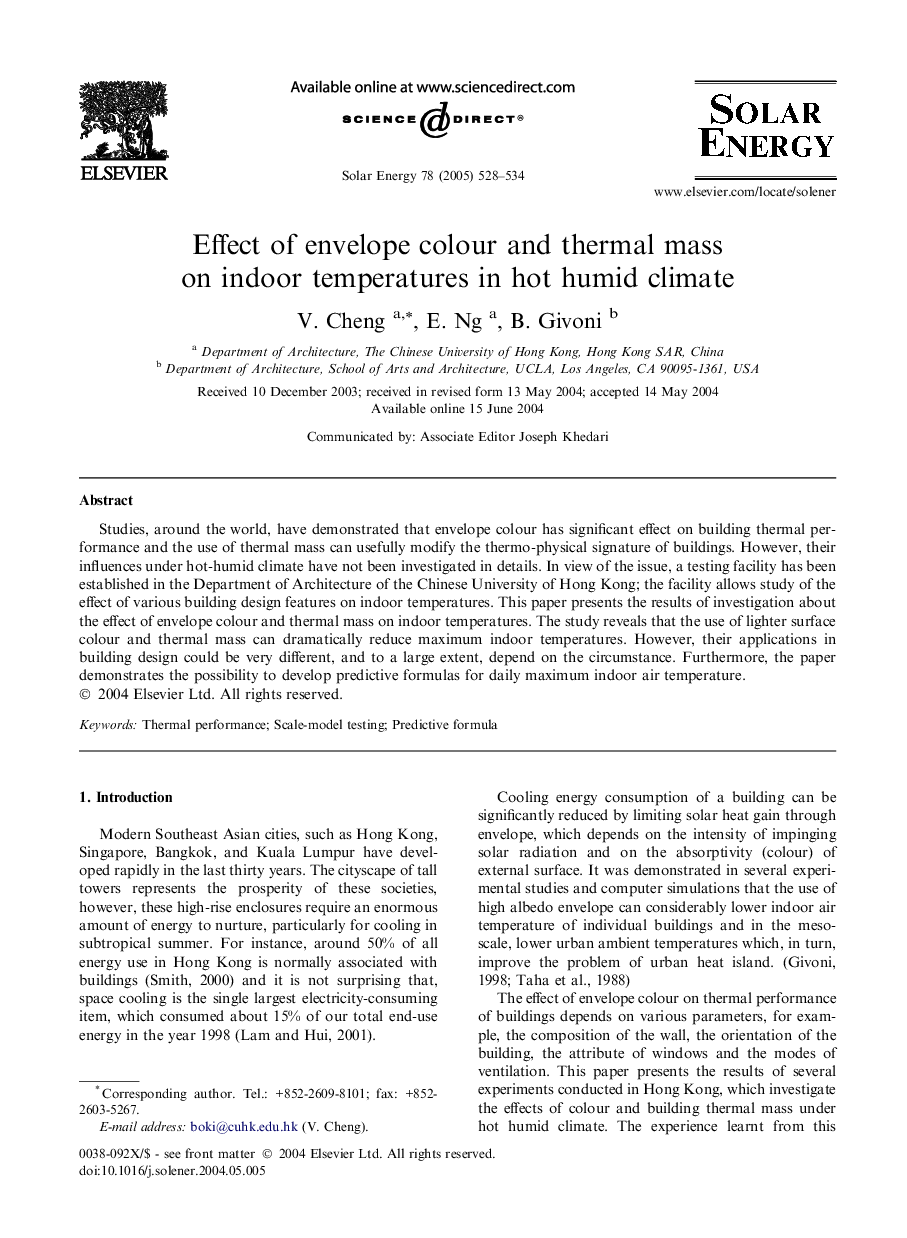| Article ID | Journal | Published Year | Pages | File Type |
|---|---|---|---|---|
| 10642977 | Solar Energy | 2005 | 7 Pages |
Abstract
Studies, around the world, have demonstrated that envelope colour has significant effect on building thermal performance and the use of thermal mass can usefully modify the thermo-physical signature of buildings. However, their influences under hot-humid climate have not been investigated in details. In view of the issue, a testing facility has been established in the Department of Architecture of the Chinese University of Hong Kong; the facility allows study of the effect of various building design features on indoor temperatures. This paper presents the results of investigation about the effect of envelope colour and thermal mass on indoor temperatures. The study reveals that the use of lighter surface colour and thermal mass can dramatically reduce maximum indoor temperatures. However, their applications in building design could be very different, and to a large extent, depend on the circumstance. Furthermore, the paper demonstrates the possibility to develop predictive formulas for daily maximum indoor air temperature.
Related Topics
Physical Sciences and Engineering
Energy
Renewable Energy, Sustainability and the Environment
Authors
V. Cheng, E. Ng, B. Givoni,
